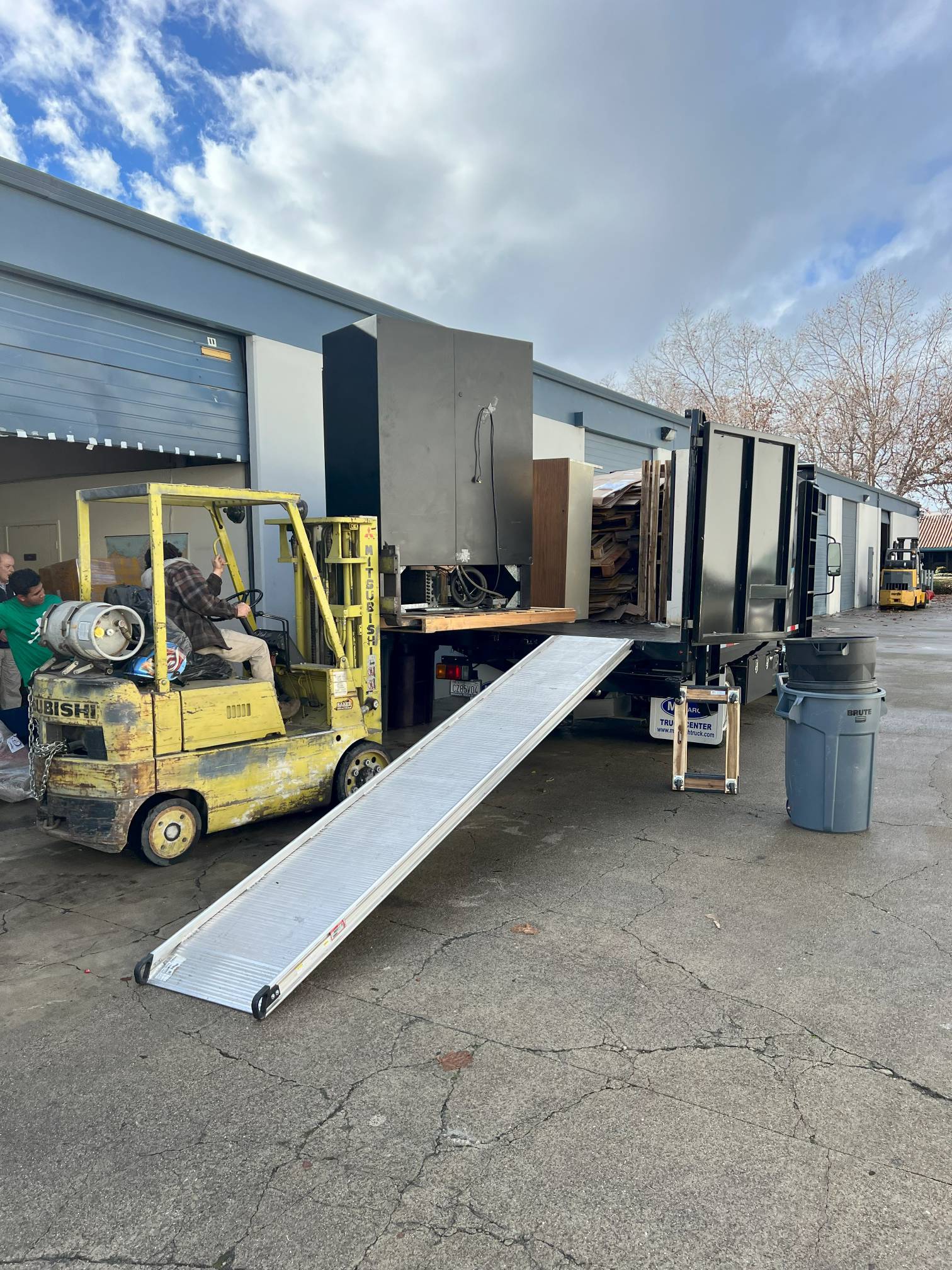
In a world where clutter seems to accumulate faster than we can manage, the quest for a tidy living space is a perpetual struggle. From unused furniture to piles of old magazines, residential junk can quickly overrun our homes, leaving us feeling overwhelmed and cramped. However, amidst the chaos lies hope. With the right techniques and strategies, reclaiming your space and bidding farewell to the mess is not only possible but also surprisingly achievable. In this comprehensive guide, we unveil effective residential junk removal techniques designed to streamline the decluttering process and transform your home into a sanctuary of order and tranquility. Say goodbye to chaos and hello to a clutter-free haven with these expert insights and practical tips.
Assessing the Scope: Understanding Your Junk
Before diving into the daunting task of decluttering, take a moment to comprehensively assess the scope of the situation. Survey each room, examining the items that have accumulated over time. From old furniture gathering dust in the attic to boxes of forgotten belongings in the basement, understanding the extent of your junk is crucial for developing an effective removal plan. Consider the size, weight, and condition of each item, as well as any potential obstacles to removal. By gaining a clear understanding of your clutter, you can better strategize how to tackle it and prevent feeling overwhelmed as you begin the removal process.
Sorting Strategies: Organizing Chaos into Manageable Categories
Effective sorting strategies are essential for transforming chaos into order during the residential junk removal process. By organizing clutter into manageable categories, you streamline the decluttering process and make it more efficient. Here’s how you can effectively implement sorting strategies:
- Initial Assessment: Begin by surveying each room and assessing the extent of clutter accumulated over time.
- Categorization: Sort items into distinct categories based on their type, condition, and potential use, such as “keep,” “donate,” “sell,” and “discard.”
- Critical Evaluation: Ask yourself critical questions about the significance, utility, and sentimental value of each item to make informed decisions.
- Prioritization: Prioritize high-traffic areas and spaces where clutter is most prevalent to maximize efficiency.
- Maintenance Plan: Establish a maintenance plan to prevent future clutter buildup and maintain a clutter-free environment.
Sorting strategies play a crucial role in the residential junk removal process, enabling you to organize chaos into manageable categories and reclaim your space with efficiency and purpose.
Decision Time: Keep, Donate, or Discard?
With your belongings sorted into categories, it’s time to make tough decisions about what to keep, donate, or discard. Be honest with yourself about the necessity and practicality of each item, considering factors such as space constraints, usability, and emotional attachment. While it can be tempting to hold onto possessions out of sentimentality or the belief that they may one day be useful, adopting a ruthless approach to decluttering is essential for achieving lasting results. Embrace the mantra of “less is more” and prioritize keeping only those items that serve a genuine purpose or bring joy into your life. By making deliberate choices about what to keep, donate, or discard, you’ll not only free up valuable space in your home but also cultivate a greater sense of clarity and simplicity.
Tactical Tools: Essential Equipment for Junk Removal Success
To effectively tackle the task of residential junk removal, arm yourself with the essential tools and equipment needed for success. Invest in sturdy boxes, bins, and bags for containing and transporting items, ensuring they are durable enough to withstand the weight and bulk of various belongings. Additionally, equip yourself with protective gear such as gloves, masks, and safety goggles to shield against potential hazards during the removal process. Depending on the nature of your junk, you may also require specialized equipment such as dollies, hand trucks, or power tools to facilitate the handling and transport of heavy or cumbersome items. By outfitting yourself with the right tools for the job, you’ll not only enhance efficiency and safety but also minimize the risk of injury or damage to your belongings.
Efficient Execution: Maximizing Time and Effort
With a plan in place and the necessary tools at your disposal, it’s time to execute your residential junk removal project with efficiency and determination. Start by tackling one area or category at a time, working systematically to avoid becoming overwhelmed by the enormity of the task. Prioritize high-traffic areas and spaces where clutter is most prevalent, gradually working your way through each room until every corner of your home is clutter-free. As you remove items, be mindful of your time and energy, taking short breaks as needed to rest and recharge. Enlist the help of friends or family members to expedite the process and make it more enjoyable. By maximizing your time and effort, you’ll not only achieve your decluttering goals more quickly but also experience a sense of satisfaction and accomplishment as you witness your home transform before your eyes.
Sustainable Solutions: Responsible Disposal Practices for a Cleaner Tomorrow
In today’s world, where environmental consciousness is paramount, adopting sustainable solutions for junk disposal is imperative for a cleaner tomorrow. By prioritizing responsible disposal practices, we can minimize waste, reduce our carbon footprint, and protect the planet’s delicate ecosystems. From recycling to repurposing, there are numerous ways to dispose of unwanted items responsibly. Embracing these sustainable solutions not only benefits the environment but also contributes to a healthier, more sustainable future for generations to come.
- Recycling: Sort and recycle materials such as paper, plastic, glass, and metal to divert them from landfills and conserve valuable resources.
- Donation: Donate gently used items to local charities, thrift stores, or community organizations to give them a new lease on life and benefit those in need.
- Repurposing: Explore creative ways to repurpose or upcycle old belongings, transforming them into new and useful items while reducing waste.
- Composting: Compost organic materials such as food scraps, yard waste, and biodegradable items to enrich soil and reduce methane emissions from landfills.
- Hazardous Waste Disposal: Safely dispose of hazardous materials such as batteries, electronics, and chemicals through designated collection sites or recycling programs to prevent environmental contamination.
Incorporating these sustainable disposal practices into our daily lives not only helps us declutter our homes but also contributes to a healthier planet for future generations. Together, let’s take action to create a cleaner, more sustainable tomorrow.
Conclusion
In conclusion, embarking on the journey to declutter your home is a transformative process that requires careful planning, determination, and the right resources. By assessing the scope of your clutter, implementing effective sorting strategies, and making deliberate decisions about what to keep, donate, or discard, you can reclaim your space and experience the liberating benefits of a clutter-free environment. Armed with tactical tools and a commitment to efficient execution, you’ll maximize your time and effort, achieving your decluttering goals with satisfaction and accomplishment. Moreover, by prioritizing sustainable disposal practices, you can minimize environmental impact and contribute to a cleaner, healthier future for generations to come. Take the first step towards a clutter-free home today and contact Rainbow Junk Removal & Hauling at (877) 630-3422 or rainbowjunk@rainbow-junkremoval.com. Let us help you turn your vision of a tidy, organized space into a reality.




